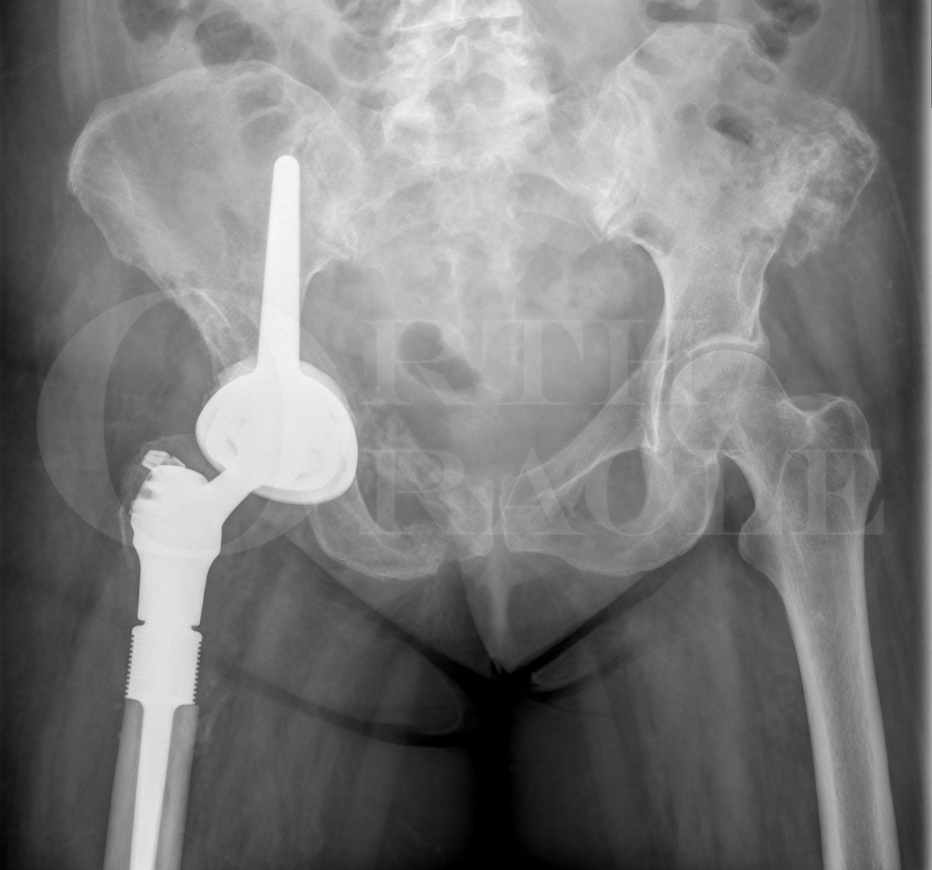Navigated coned hemi-pelvis endoprosthesis (Stanmore METS, Stryker) with dual mobility acetabulum (Avantage, Zimmer Biomet) and modular proximal femoral endoprosthetic replacement with trochanteric reattachment (Stanmore METS, Stryker)
Overview

Subscribe to get full access to this operation and the extensive Bone & Soft Tissue Tumour Surgery Atlas.
Professional Guidelines Included
Learn the Navigated coned hemi-pelvis endoprosthesis (Stanmore METS, Stryker) with dual mobility acetabulum (Avantage, Zimmer Biomet) and modular proximal femoral endoprosthetic replacement with trochanteric reattachment (Stanmore METS, Stryker) surgical technique with step by step instructions on OrthOracle. Our e-learning platform contains high resolution images and a certified CME of the Navigated coned hemi-pelvis endoprosthesis (Stanmore METS, Stryker) with dual mobility acetabulum (Avantage, Zimmer Biomet) and modular proximal femoral endoprosthetic replacement with trochanteric reattachment (Stanmore METS, Stryker) surgical procedure.
Computer navigated tumour surgery is regarded as one of the major developments in the field of orthopaedic oncology of the past decade. Navigation permits pre-operative three-dimensional resection and implant planning to be combined with intra-operative imaging. These advantages have resulted in its growing incorporation into routine practice since its first application in 2004. In this case I describe the use of navigation to aid endoprosthetic reconstruction of the pelvis and acetabulum using the Stanmore coned semi-pelvis (‘ice cream cone’) endoprosthesis (http://www.stanmoreimplants.com/downloadpdfs/06.METS%20Coned%20Hemi-Pelvis%20Information%20and%20Surgical%20Procedures%20(File%20Size%20-%201MB).pdf).
This implant is ‘off the shelf’ and utilised in orthopaedic oncology to reconstruct the peri-acetabulum due to bone loss due to tumour involvement. Pelvic anchoring is provided by a fixed hydroxyapatite stem which can augmented with bone cement and reinforced with screws to achieve a stable acetabular reconstruction. Having created the acetabulum, a suitable acetabular cup is cemented into the cone for use with a total hip replacement. Recent evidence has confirmed that dual-mobility articulations reduce the risk of dislocation with hemi-pelvic endoprostheses, so this case describes the use of a cemented dual-mobility acetabular cup and bearing.
Metastatic bone disease commonly presents to the orthopaedic surgeon. Bone is the most common site of metastasis. Approximately 60% to 70% of patients with breast cancer develop bone metastases during the course of their disease. Skeletal related events (SREs: pathological or impending fracture, hypercalcaemia, spinal cord compression, severe pain) may require surgery and/or radiotherapy to palliate pain and to maintain both the capacity to walk and quality of life. Due to advances in management of common malignancies, particularly breast and prostate carcinoma, patient survival has been extended to the point that these are now considered chronic diseases rather than terminal diseases. Consequently, the prevalence of metastatic bone disease continues to escalate.
Author: Mr Jonathan Stevenson FRCS (Tr & Orth)
Institution: The Royal Orthopaedic hospital, Birmingham, UK.
Clinicians should seek clarification on whether any implant demonstrated is licensed for use in their own country.
In the USA contact: fda.gov
In the UK contact: gov.uk
In the EU contact: ema.europa.eu
Online learning is only available to subscribers.



















